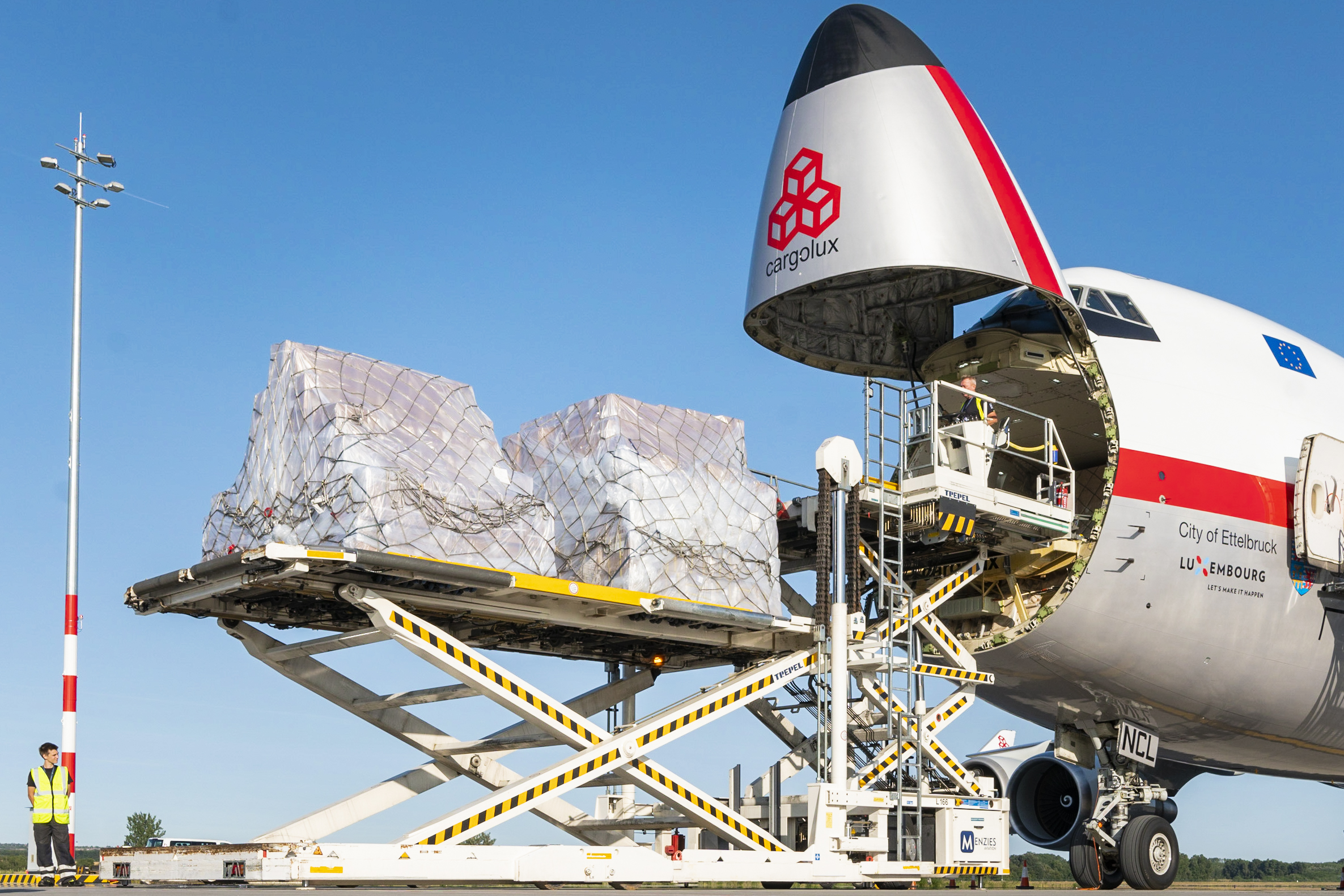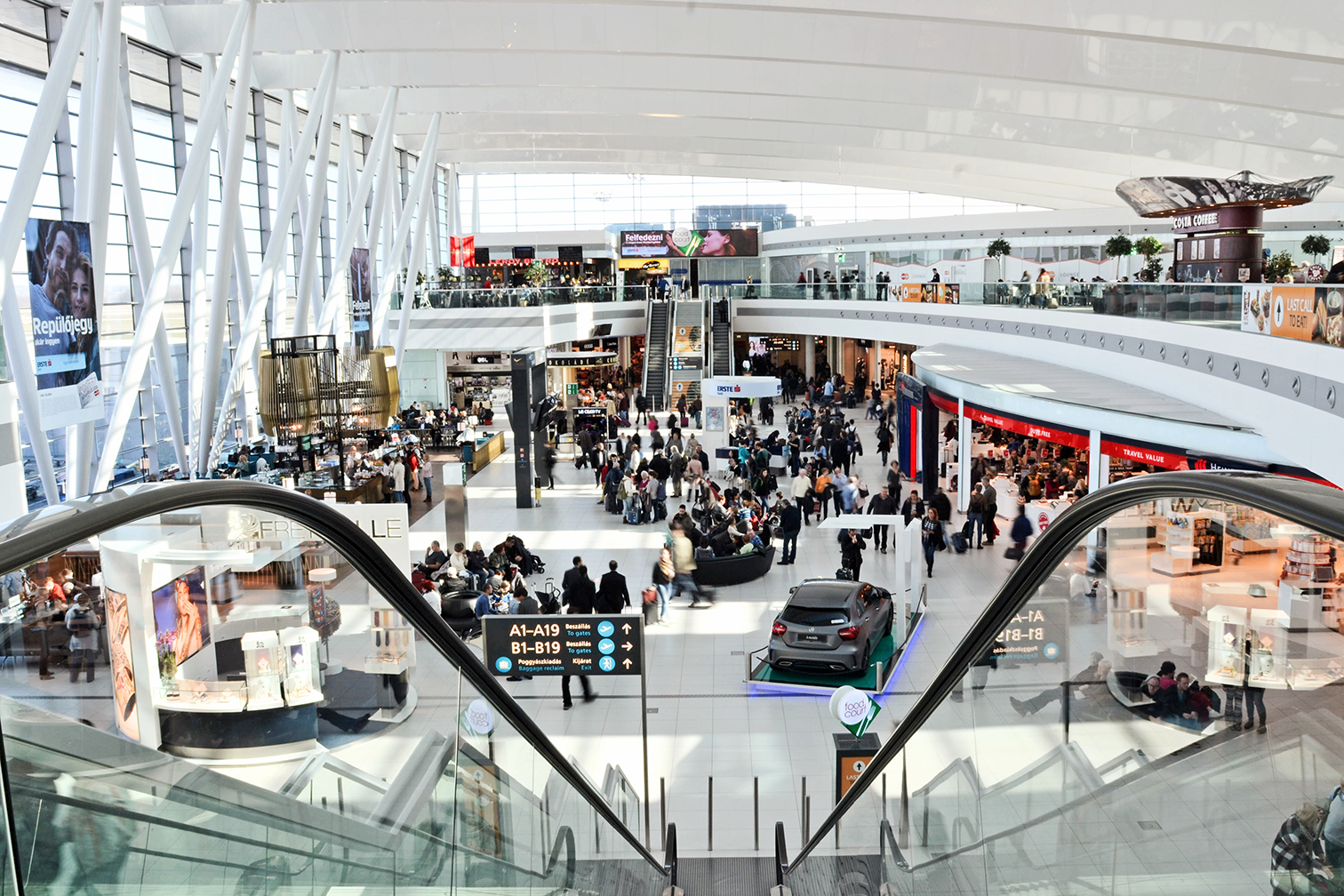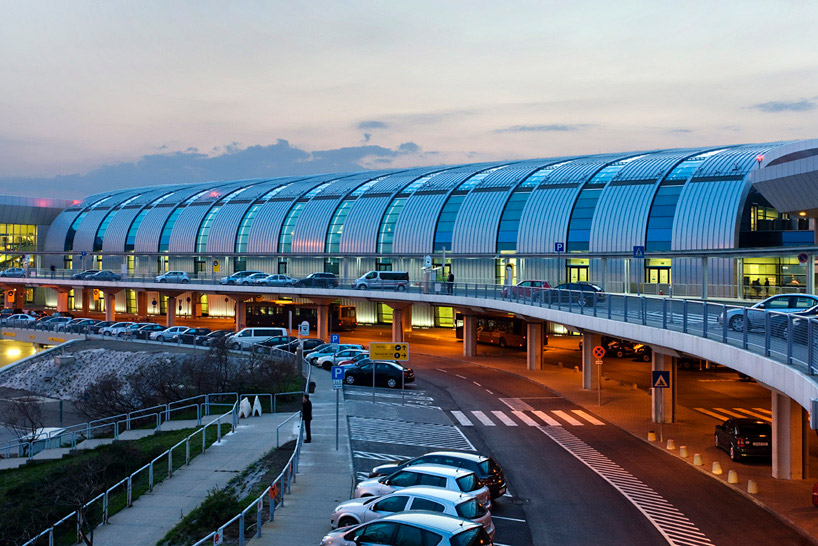BUD CEO: Digitalization and Sustainability ‘a Must’

Chris Dinsdale, CEO of Budapest Airport.
Airports have faced a strong recovery in passenger traffic during the summer but also difficulties recruiting the required staff. Advanced technology is increasingly being used to help deal with such challenges. The Budapest Business Journal talked to Chris Dinsdale, CEO of Budapest Airport (BUD), the operator of the Ferenc Liszt International, about the investments being made to make travel more pleasant for passengers.
BBJ: Security checks and baggage handling are probably the most time-consuming processes for passengers in any airport. How is BUD easing this stress?
Chris Dinsdale: One of the solutions that we have implemented is designed to tell passengers what is actually happening at a given moment, so when you arrive at the security line at the airport, you’ll see screens that tell you how long the wait is. It tracks Wi-Fi and Bluetooth signals from phones anonymously. It doesn’t know anything about the person; it just knows that there’s a phone that’s going from point A to point B in a certain amount of time. Based on this information, it can measure how long people are taking, and it can redirect passengers to another lane or notify the airport when action is needed to ensure waiting times do not get too long. The next step will be to put all this information on our website. So, before you even get to the airport, you know which lane is faster and how long your wait should be. That’s been a great success; we’ve tested it for quite an extended period.
We are currently developing a machine learning system that predicts the number of passengers expected to arrive at the airport, either seeking to check in or pass through security. Based on several input variables, it will do a monthly forecast, a weekly, a daily, an hourly and finally, a five-minute forecast. And because it’s a machine, it will be able to run these forecasts over and over. This system will take given variables and learn how to use them to predict the actual data more accurately. For example, we will feed in weather or canceled flights around Europe, airline schedules, or the seasonality of all these things. What that means is we will have a much better prediction of how many people to expect at a certain point in time. You can then ensure that the required staff is available to provide the best possible passenger experience.
We have also started testing another very interesting technology, an advanced body scanner. It consists of two parallel walls that can quickly scan a person for prohibited items. The advantage is that it is less intrusive than traditional technologies and ensures that passengers require fewer body searches when going through security. Furthermore, this summer, we started testing a walkthrough body scanner, so you don’t even have to stop while going through it. So, we’re heading towards a future where you just walk in, and everything’s happening around you, but you don’t know it; it is less intrusive. We also changed our X-ray system; we are one of the first in Europe where you can leave your electronics in your bag, and you only have to take out your liquids.

BBJ: How are passengers meeting all of these developments?
CD: The interesting part is that many of these are invisible to our passengers, so all they “see” is a better experience. The way most airports in the world measure quality is through something called ASQ, the airport service quality survey. ASQ is measured through 37 categories, and it’s an independent survey. Third-party inspectors come in and interview passengers; we don’t know when they’re doing it and who’s doing it. You get an answer later on, so it’s kind of a black box, and that’s on purpose because they don’t want us trying to influence it in any way. So, in ASQ scores, we have been going up very quickly. For comparable airports in our region, we are above all the rest. We’re ahead of all the other capital airports in our region with at least 10 million or more passengers, so we’re doing very well on quality. If we look at the summer, you saw these viral videos of airport lines going kilometers out of the terminal. Our maximum waiting time in security was 13 minutes, and the average is around five minutes compared to others. We went through this, and our quality scores are going up; we got the best airport quality rates from our passengers for our region. It has been a significant investment, but it’s worth it.

BBJ: An issue that is probably at least as important as digitalization is sustainability.
CD: Digitalization or innovation are essential focus areas in achieving a sustainable future. We’ve set 2035 as our net zero goal. I’d like to bring it forward as much as possible, but of course, a lot of that is also energy efficiency. The digitalization process helps with that immensely. For example, we’ve introduced e-signing for our documents. The old days of printing something and taking it halfway around the world just shouldn’t exist, and so digitalization makes a big difference. Also, we have already completed a feasibility study to heat the whole property with geothermal energy so that we will have no natural gas consumption at all. It’s moving ahead, and seismic works will start soon, with test drilling planned for next year. It is quite innovative work. I think there are only a few airports worldwide that are heated with geothermal energy. Sustainability is a must.
BBJ: What are the developments in the cargo business?
CD: Our cargo business has done very well. It has grown, and, actually, we just won an award for the best cargo hub globally here in Budapest. That is a result of not thinking of cargo as airport versus cargo versus forwarders versus tax authority but thinking of it as an ecosystem. And that ecosystem needs to collaborate and communicate well, or else it doesn’t thrive. The next step would be a cloud-based cargo community system, easily interfaceable for every company, where you link all the areas: communication, messaging, data sharing, capacity planning and optimization, cargo tracking, process measurement, e-payments, and e-authority reporting. For example, the tax authority’s digitalization is very advanced in the e-customs clearance of airfreight, and other players have also made efforts; the community system would bring them all together into one collaborative ecosystem. We are doing a project now to digitalize the whole back end for the cargo community with a continuous development approach in the future if demand for new services pops up. And it’s not just about the airport; the whole cargo community would have a back-end, cloud-based digital process, which makes it more efficient, faster and more accurate. In the future, these community systems from different airports around the world could be connected and communicate with each other, raising the whole concept to an international, global level.

BBJ: What other developments can we expect in the future?
CD: If you look at the passenger journey from the beginning to the very end, we’re now just rolling out a new parking system. That opens up exciting opportunities because you can take digitalization to the next level, where you can pay for everything on your phone, or you can have sensors to tell you where there are free parking spaces. It exists elsewhere, but we started to bring that kind of digital journey from the very beginning through to the check-in hall, where we have a lot of self-service baggage drop-off units. If you have self-service baggage drop-off, the peaks can be better absorbed, and, most importantly, passengers will have less waiting time, so it’s a much better experience. Why not tag your bag in the car park or on the curbside? You’ll be able to print it at home, eventually. So, communication with passengers is essential. They can get information at the airport about how long the walk is or where to find specific shops and all the details. These are all digital solutions; if you give that information, passengers can better navigate where they need to go. Now we’re starting a trial at our Pier 1 with a system that uses artificial intelligence to monitor and predict aircraft departure time. For example, when an aircraft arrives, the fuel truck comes in, and the software in the camera knows that that was a fuel truck, how long it took to refuel and when it left. So, it can start to predict, based on past experience, when that aircraft is going to be ready to leave. Everything becomes more predictable, thus reducing delays, which is better for the passengers. This is where we are heading, and we are testing it now. Few airports in the world have it, but this is something we want to start.
We have also assisted HungaroControl in installing towers that will hold cameras equipped with infrared and other sensors that allow visibility even under severe weather conditions. These can be used to control the airport remotely, so air traffic controllers need not sit in the control tower, but they can use their own location, in a more comfortable place. HungaroControl is a market leader in these kinds of modern technologies, so we are assisting them in rolling these out and cooperating with them on this.
This article was first published in Invented in Hungary 2022-2023 on December 2, 2022.
SUPPORT THE BUDAPEST BUSINESS JOURNAL
Producing journalism that is worthy of the name is a costly business. For 27 years, the publishers, editors and reporters of the Budapest Business Journal have striven to bring you business news that works, information that you can trust, that is factual, accurate and presented without fear or favor.
Newspaper organizations across the globe have struggled to find a business model that allows them to continue to excel, without compromising their ability to perform. Most recently, some have experimented with the idea of involving their most important stakeholders, their readers.
We would like to offer that same opportunity to our readers. We would like to invite you to help us deliver the quality business journalism you require. Hit our Support the BBJ button and you can choose the how much and how often you send us your contributions.








